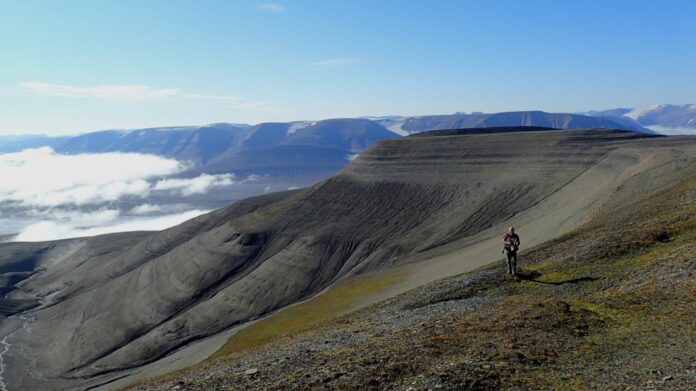New evidence reveals that widespread wildfires occurred during the Early Triassic period, approximately 250 million years ago, challenging the long-held belief in a “charcoal gap” following Earth’s most severe extinction event. An international team of scientists, including researchers from Heriot-Watt University in Scotland and the University of Lausanne in Switzerland, uncovered microscopic chemical traces of ancient fires preserved in sediments from Svalbard, Norway.
Challenging the “Charcoal Gap”
For decades, the absence of visible charcoal in geologic records led to the assumption that wildfires had largely disappeared after the Permian-Triassic extinction, also known as the “Great Dying.” This catastrophic event wiped out up to 96% of marine species and 70% of terrestrial vertebrates, primarily due to massive volcanic eruptions. However, the latest study demonstrates that fires persisted, even when traditional fossil evidence was scarce.
Microscopic Evidence of Ancient Fires
Instead of relying on visible charcoal, the research team analyzed 30 sediment samples for polyaromatic hydrocarbons (PAHs). These compounds are molecular fingerprints of combustion, formed during the incomplete burning of plant matter, and can persist in sediments long after more visible evidence degrades. The analysis revealed widespread PAHs consistent with burning fresh plant matter, strongly suggesting that wildfires actively shaped ecosystems during the Early Triassic.
Modeling Fire in Deep Time
The team combined sediment analysis with climate and vegetation modeling using the open-source General Circulation Model (MITgcm) developed by MIT. This allowed them to reconstruct how shifting climates, ecosystems, and fire regimes interacted after the mass extinction. By running their data through theory, the researchers confirmed that the microscopic evidence aligned with the expected effects of wildfires in that period.
The Power of Open Science
Dr. Clayton Magill, Associate Professor of Biogeochemistry at Heriot-Watt University, emphasized the importance of using open-source models. “Open science allows everyone to compete at the highest level, regardless of access to funding or resources.” This collaborative approach facilitated the groundbreaking research, which was led by Dr. Franziska Blattmann at the University of Lausanne.
Lessons for Today’s Warming World
The study highlights the resilience of ecosystems and the role of fire in shaping them, even after catastrophic events. The Early Triassic was a period of extreme climate swings and environmental stress, mirroring some of the challenges facing the planet today. By understanding how ecosystems recovered from past crises, scientists can better prepare for the future impacts of climate change.
The research underscores that fire, even in the absence of visible charcoal, played a significant role in shaping Earth’s ecosystems after the greatest mass extinction. The use of microscopic evidence and open-source modeling has opened new avenues for understanding deep-time ecological processes and their relevance to the present
































